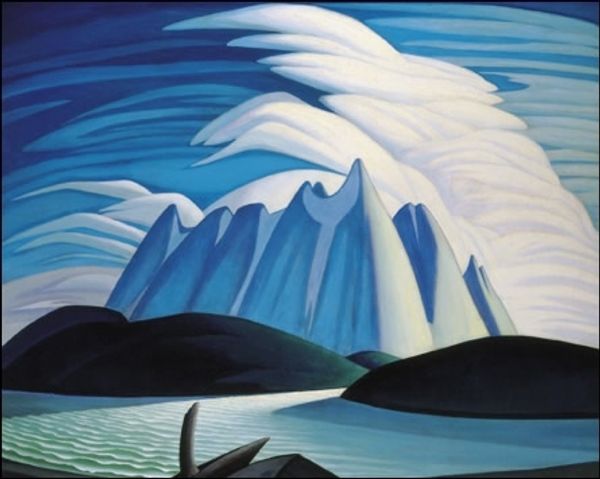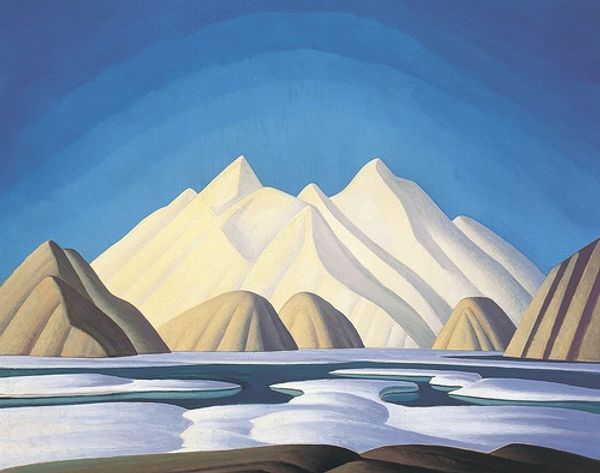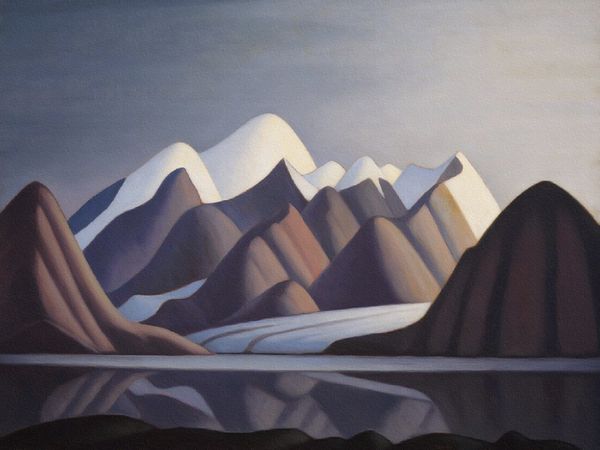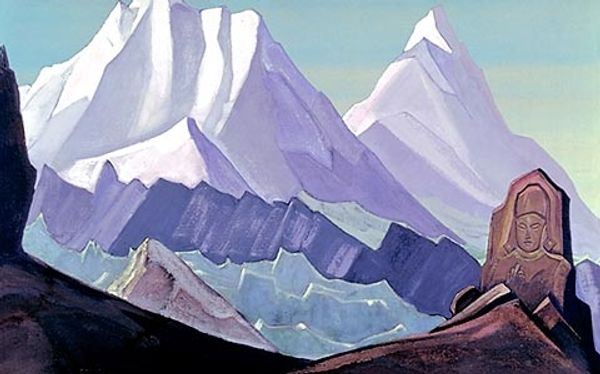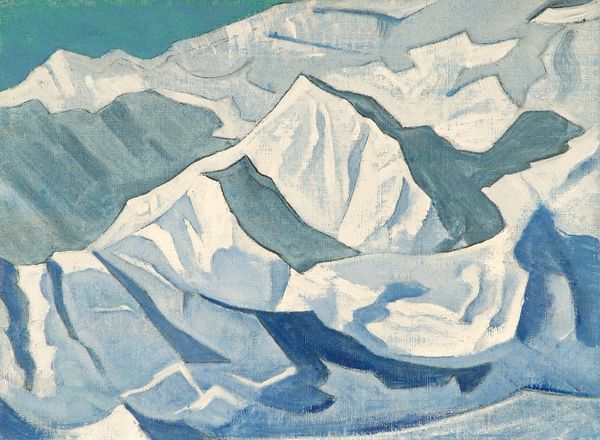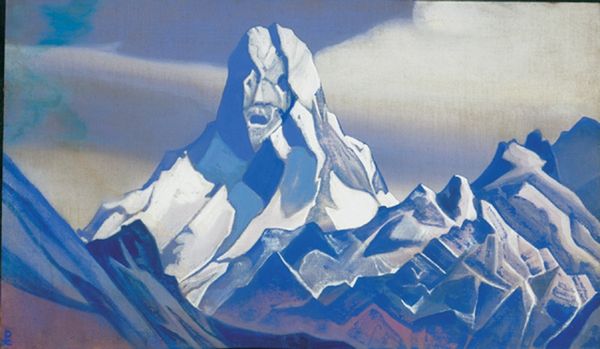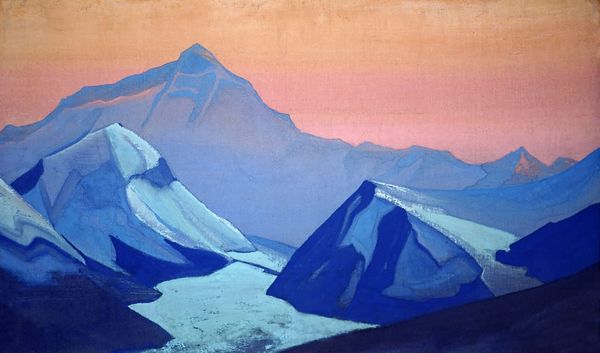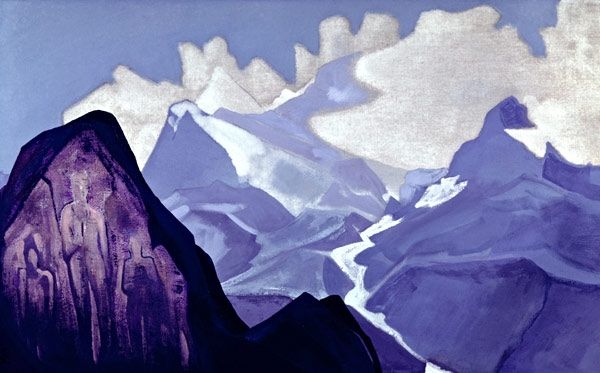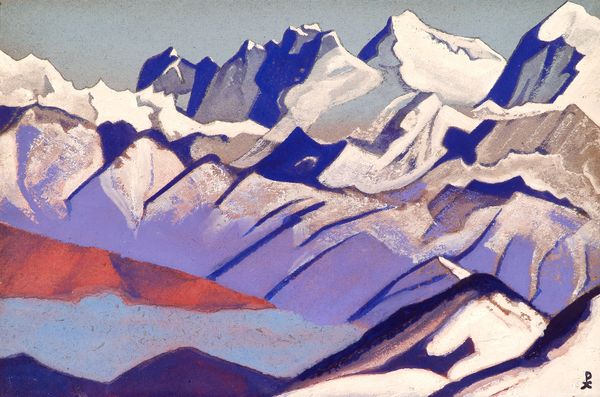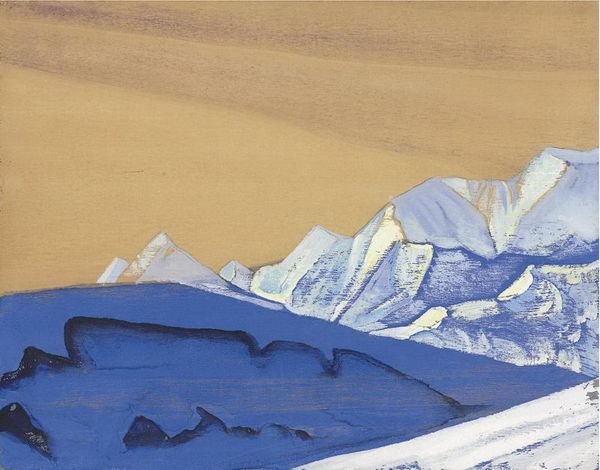
painting
#
abstract painting
#
painting
#
landscape
#
group-portraits
#
geometric-abstraction
#
abstraction
Copyright: Lawren Harris,Fair Use
Editor: Here we have Lawren Harris’s “Mountain Forms,” painted in 1926. It's a striking painting that really simplifies the mountainous landscape into these sharp, almost crystalline forms. I find its geometry to be really powerful, but I’m not sure how to read into it much further. What do you see in this piece? Curator: This painting presents a fascinating study in geometric abstraction. Note how Harris uses a limited palette of blues and whites to construct a monumental mountain range. It isn't about mimicking reality; it is about creating a powerful visual structure. Consider how the interplay of light and shadow models the form, almost resembling fluted columns of a classical temple. Editor: Yes, now that you point it out, it has a certain monumentality to it, an imposing quality that seems…calculated? Curator: Precisely. Think of Harris’s deliberate use of line and plane to create depth and volume, but within a very restricted visual vocabulary. Do you perceive how the simplified forms push toward abstraction while still alluding to a tangible, recognizable landscape? It resists pure representation while holding onto recognizable form. Editor: I do, and it seems so much more potent precisely because it sits at that intersection between the abstract and the real. Curator: Indeed. By reducing the landscape to its essential geometric components, Harris prompts us to look at the intrinsic structure of nature, divorced from sentimentality. It becomes a contemplation on the formal elements of painting themselves: line, color, shape, and form. Editor: I now see that his conscious formal treatment transcends mere representation to delve into the essence of form itself. Curator: Precisely! It reveals how a structured aesthetic vision offers access to deeper understandings beyond superficial depictions. Editor: Well, seeing how structure informs so much is more tangible now. Thank you!
Comments
No comments
Be the first to comment and join the conversation on the ultimate creative platform.
